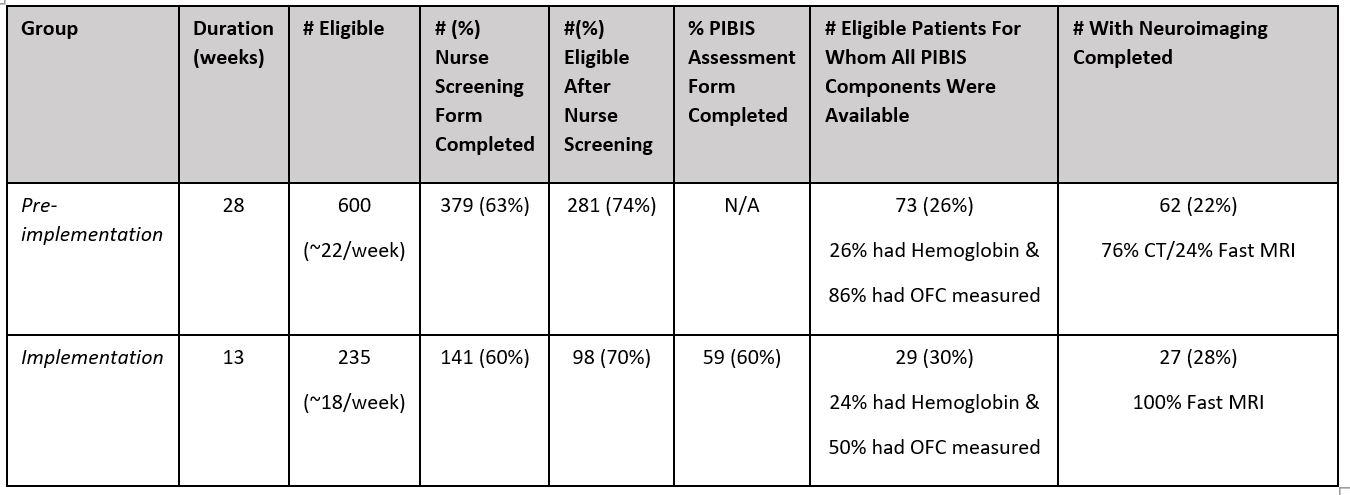Child Abuse & Neglect
Child Abuse & Neglect 1
590 - Application Of The EMR-Integrated Pittsburgh Infant Brain Injury Score (PIBIS) To Improve Clinical Care In The Emergency Department
Publication Number: 590.103

Srinivasan Suresh, MD, MBA, FAAP
Vice President & CMIO; Professor of Pediatrics
University of Pittsburgh School of Medicine
Pittsburgh, Pennsylvania, United States
Presenting Author(s)
Background:
Abusive head trauma (AHT) is the leading cause of death from infant traumatic brain injury. Early AHT detection is challenging, given the non-specific symptoms. The Pittsburgh Infant Brain Injury Score (PIBIS) is a clinical decision rule to identify infants that could benefit from neuroimaging. PIBIS variables are patient age, physical exam findings, hemoglobin (Hb) and occipito-frontal circumference (OFC). PIBIS was validated in a prospective multi-center study.
Objective:
Determine if PIBIS integrated into the electronic health record (EHR) can accurately identify eligible patients, alert the provider to calculate PIBIS, automatically calculate the PIBIS, and display the score and clinical recommendations to the clinician in the context of the Emergency Department (ED) workflow.
Design/Methods:
A pre/post implementation design was used. Screening to identify potentially eligible patients was automated. Nurses were alerted to complete a screening form to confirm eligibility. Providers received a PIBIS assessment form, followed by a PIBIS score, clinical recommendations, and a dedicated neuroimaging order set. Programming was FHIR (Fast Healthcare Interoperability Resources; an industry standard) based to facilitate later dissemination.
Results: Please see Table 1.
There was no overlap among children eligible for PIBIS and those identified by the pre-existing EHR-embedded child abuse clinical decision support system (CA-CDSS). There was one case of missed AHT during implementation where an infant presented for vomiting, identified by the system and confirmed as eligible by the nurse screening form. Provider assessment form was not completed and neither Hb nor OFC were measured. The infant was discharged with a diagnosis of ‘vomiting/gastroesophageal reflux.’ Seven days later the infant returned with severe AHT.
Conclusion(s):
EHR-integrated-PIBIS identified infants are distinct from those flagged as high risk by pre-existing CA-CDSS. The almost complete transition from head CT to fast MRI was unexpected. Challenges were related to human factors (nurse screening and provider assessment forms not completed, Hb and OFC not measured). The effect of nursing and provider shortages and high ED volumes on implementation have been significant. The missed case of AHT was identified by PIBIS but missed due a provider form not being completed and PIBIS components not being measured. Continued education and 1:1 feedback, better availability of point-of-care Hb and tape measures in all exam rooms will improve engagement.
